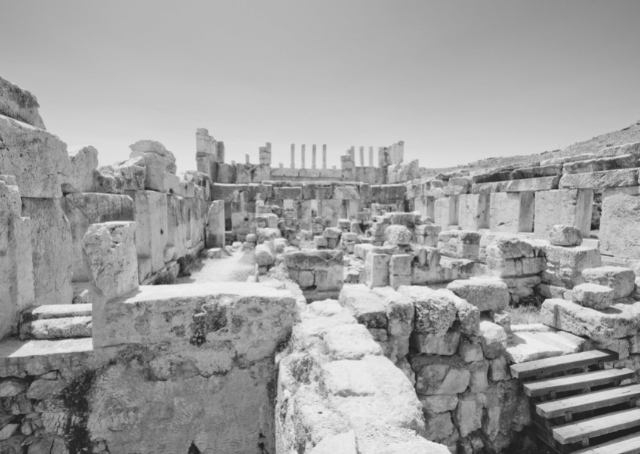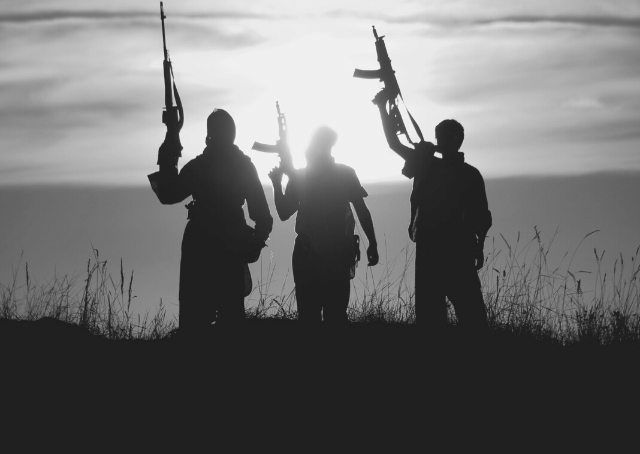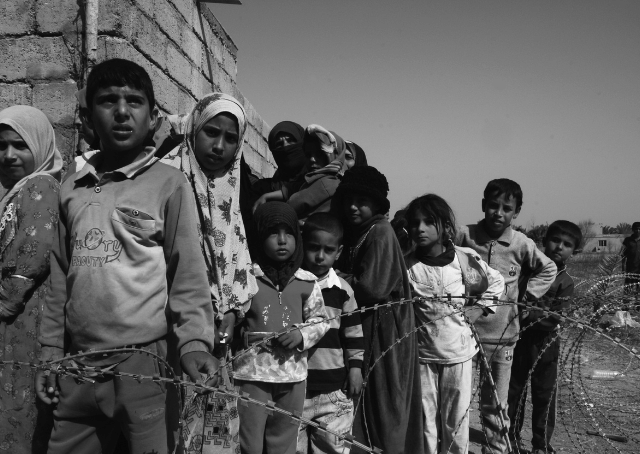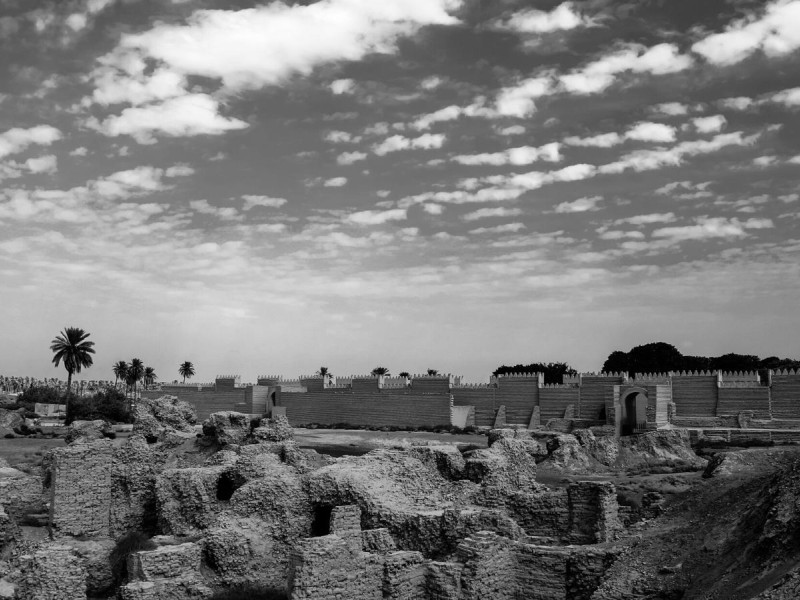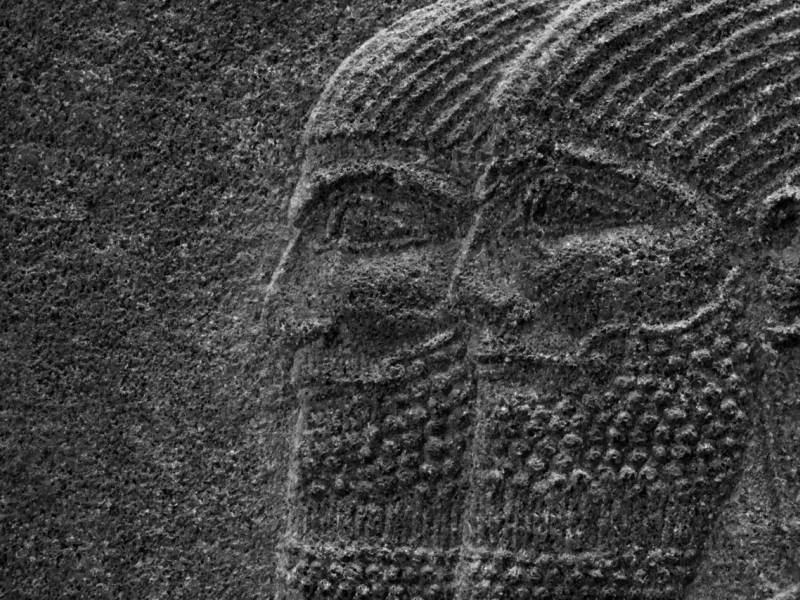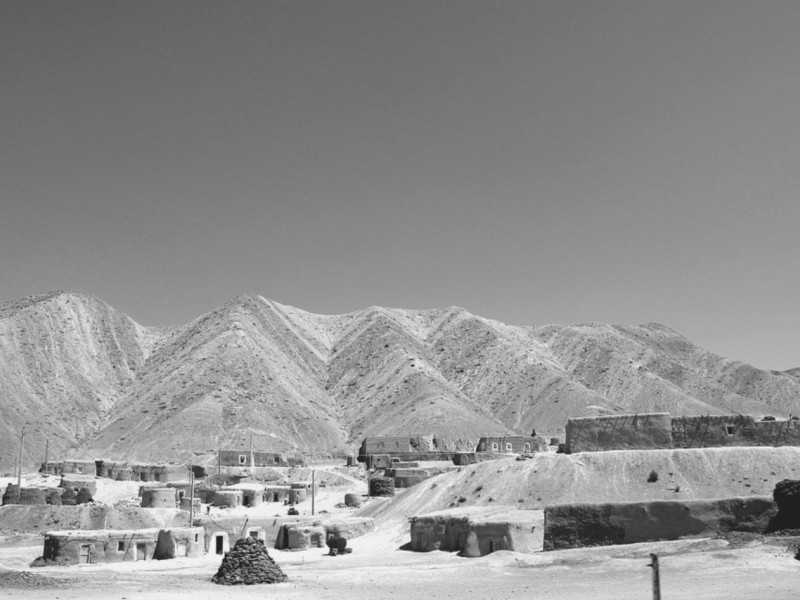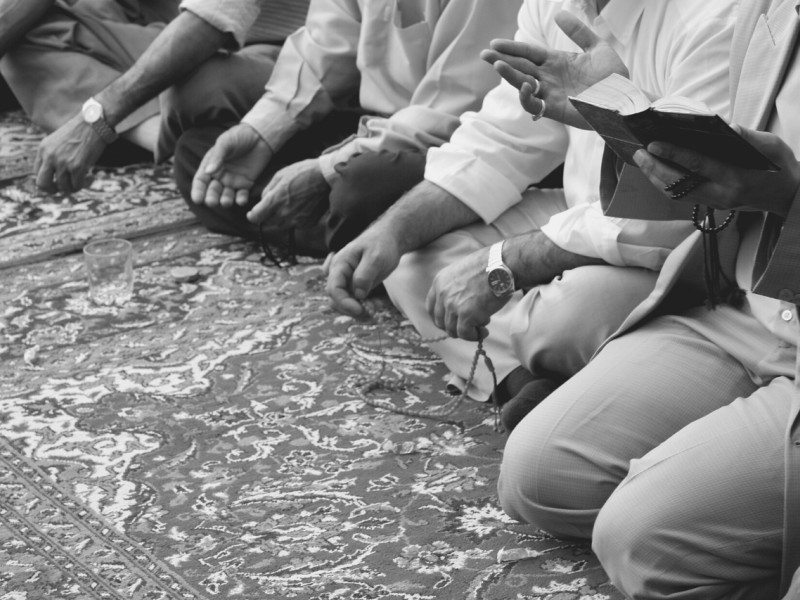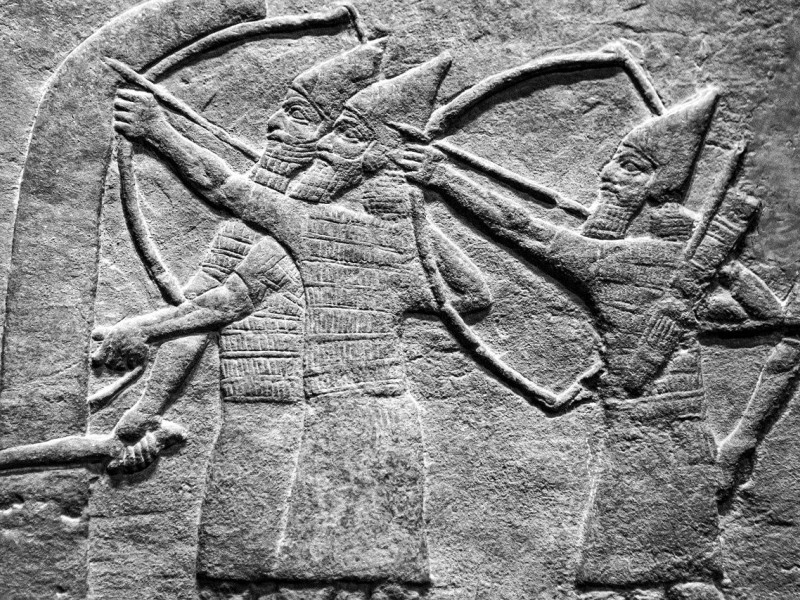Iraq's History: The World’s Oldest Civilization
Iraq’s history makes it one of the oldest human civilizations in the world. From its ancient Mesopotamian roots to its tumultuous modern history, Iraq has remained one of the focal points of the Arab world for centuries.
In this article, we explore the timeline from ancient Iraq to its establishment as a modern nation-state.
Early History of Iraq
The land of modern-day Iraq, Mesopotamia, has been called the “Cradle of Civilization,” as it was home to civilizations that made many of humanity’s first innovations and discoveries.
The name “Mesopotamia,” which means “between rivers,” reflects the region’s location between the Tigris and Euphrates rivers.
Scholars believe that humans settled in the region during the Paleolithic Era. By 14,000 B.C., these Mesopotamians were living in circular primitive houses throughout the northern part of Mesopotamia.
By 9000 B.C., these settlers utilized their location between the Tigris and Euphrates rivers to use irrigation to develop agriculture and raise livestock. As they improved their agriculture and domestication techniques, more settlements began spreading into Southern Mesopotamia.
The Sumerians, one of the world’s oldest civilizations, lived in the Tigris-Euphrates river valley. By 3000 B.C., Mesopotamia was completely controlled by Sumer. The Sumerians boasted some of the world’s first densely populated cities, including Uruk, dating back to 3200 B.C.. At Uruk’s peak, 50,000 people lived in the city. The Sumerians also created the first written language, called cuneiform.
The Akkadian Empire took over the lands of the Sumerians through military conquest in 2234 B.C.. The Akkadian Empire had a centralized government and was composed of a large multicultural population. Commerce in the region grew enormously under the Akkadians, and Mesopotamian architecture greatly improved.
In 1894 B.C., the Babylonian Empire came to power in the region. The most revered king of the Babylonians was King Hammurabi, who greatly expanded the Babylonian Empire and created one of the world’s first legal codes. King Hammurabi’s code was unique because it codified law across the empire so that every citizen was expected to adhere to the same law system.
The Hittites conquered Babylon in 1595 B.C.. The Hittites were especially adept weapons manufacturers, which made them excellent warriors and helped them spread their conquests further. The Kassites soon took over Mesopotamia from the Hittites, and the region saw a significant increase in immigrants from Europe and India.
In 1365 B.C., the Assyrian Empire expanded into the area, eventually taking all of Mesopotamia in 1220 B.C.. During the time of the Assyrian Empire, the world’s first library was built in modern-day Iraq. The Babylonian Empire once again came to power in the region in 626 B.C. under King Nabopolassar. His son Nebuchadnezzar increased Babylonian territory and sacked Jerusalem.
The Persian Empire, led by Cyrus the Great, took the territory in 539 B.C. A series of Persian dynasties ruled over Mesopotamia until 116 AD, when the region fell under Roman control. Then, in 651 A.D. Arab Muslims took over the land, and Baghdad’s city became the capital of the Abbasid caliphate.
In 1258 the Mongols led by Hulagu Khan captured the region, and Baghdad was sacked. The Grand Library of Baghdad was destroyed, and thousands of the city’s inhabitants were killed during the battle. After years of Mongol and Mamluk rule, the region fell under the power of the Ottoman Empire in the 16th century.
Following the allied victory of World War I, the British took over the lands of the Ottoman Empire and created the State of Iraq as part of the British Mandate in the region. However, the British government chose to make a Sunni Arabian king the ruler of Iraq’s population, which primarily consisted of Shia Muslims and Kurds. This choice led to a massive revolt throughout Iraq’s population.
In 1932, the British mandate ended, and Iraq became an independent constitutional monarchy ruled by the British-appointed King Faisal. But Britain kept its military bases in the area and continued to exert significant influence in the country’s administration.
In 1941, a pro-Axis coup caused Britain to reoccupy the country, and the Iraqi government agreed to join the allied cause of World War II.
Independence
In 1958, Brigadier General Abd-al-Karim Qasim conducted a coup against the monarchist government and assassinated King Faisal II. This coup ended 26 years of Hashemite rule in the country and led to 20 years of immense political instability in Iraq. As a result, Iraq was officially declared as a republic and left the pro-British Baghdad Pact.
In 1963, Prime Minister Qasim was overthrown in a coup conducted by Colonel Abdul Salam Arif. In 1968, the Baathist party led a coup that put Ahmad Hasan al-Bakr in power.
Al-Bakr named his younger cousin Saddam Hussein deputy Chairman of the Baath Party’s Revolutionary Command Council. This position effectively gave Hussein dual control of the country with Bakr, who increasingly became a subordinate figurehead to Hussein throughout the 1970s.
In 1972 Iraq nationalized the Iraq Petroleum Company and enjoyed a massive increase in oil revenues throughout the 1970s. After this nationalization, the Soviet Union became Iraq’s largest market for oil exports, and the nations increasingly became close allies.
In 1979 Saddam Hussein gained power by taking part in a coup that forced al-Bakr to resign. Saddam immediately began a purge of the Iraqi government and Baath Party with immense brutality.
Iran-Iraq War
The 1979 Iranian Revolution worried many Arab leaders, especially Hussein. Not only was the country at his border now governed by Shia Muslims, but its leader was explicitly calling for the Iraqi Shia population to overthrow him. The Iranian Ayatollah increasingly funded and gave haven to Shia guerilla groups that led raids on Iraqi territory.
For Hussein, this was the perfect excuse to not only oust the new Iranian regime from power but also obtain the oil-rich Khūzestān region on the Iraq-Iran border. Hussein hoped that a military victory against Iran would make Iraq the leading country of the Persian Gulf.
In 1980, Hussein invaded Iran, beginning the eight-year Iran-Iraq War. Though the Iraqi military made gains in the first three months of the conflict, the war quickly turned into a stalemate. By 1982, Iran had recovered all of its lost territories and went on the offensive for the rest of the war, though it only made minor gains against Iraqi defenses.
Throughout the conflict, both sides used ballistic missiles on city targets and targeted oil tankers to disrupt oil revenues. Saddam was condemned for his use of chemical weapons throughout the war, both on Iranian and Iraqi Kurds who sided with Iran. In March 1988, Hussein ordered a brutal attack on the Kurdish town of Halabjah using poison gas that killed 3,000-5,000 Kurds.
Despite Saddam’s authoritarian regime and his war crimes (namely using chemical weapons on Kurds and Iranians), the U.S. established friendly diplomatic relations with his regime and actively funded Iraq throughout the conflict.
It was largely caused by the 1979 Iranian Revolution, which ousted an American-backed Shah for an Islamic leader who was openly hostile to U.S. influence in the Middle East.
Persian Gulf War
The eight-year war greatly hurt Iraq’s economy as Iran destroyed large amounts of infrastructure in Southern Iraq. In addition, the country owed a considerable debt to other Gulf countries, including the oil-rich neighboring country of Kuwait.
Facing a shattered economy from the Iran-Iraq War in 1990, Saddam Hussein invaded Kuwait. Hussein immediately received condemnation from the U.N. and was warned to withdraw immediately. In February 1991, a sizeable American-led coalition force invaded Kuwait and pushed Saddam’s forces back into Iraq.
A month after Iraqi forces withdrew from Kuwait, revolts sprang up in the northern Kurdish regions and the southern Shia regions of Iraq. These revolts were largely caused by the perceived weakness of the Iraqi army after its defeat to U.S. forces. The revolt was put down brutally by Saddam’s government forces.
Following this brutal quelling of the unrest, the United Nations established a safe zone for Kurds in the North, and Kurdistan increasingly acted autonomously throughout the 1990s. A no-fly zone for Iraqi planes was also created in the South to protect Iraq’s Shia communities.
Throughout the decade, the international community increasingly worried that Hussein was developing a nuclear program. Heavy sanctions were put on Iraq throughout the 1990s, as the already dwindling Iraqi economy rapidly declined further.
In October 1998, Hussein refused cooperation with weapon inspectors and expelled them from the country. In December, Operation Desert Fox commenced, which destroyed much of Iraq’s military infrastructure. This operation was a U.S. and British-led bombing operation designed to destroy Iraq’s nuclear and chemical weapons.
The terror attack on the World Trade Center on September 11, 2001 greatly heightened tensions between U.S. leaders and Hussein’s regime. As a result, in November 2002, Iraq was given a final warning by U.N. weapon inspectors to comply with inspections. Though Hussein complied and allowed inspections, the U.S. accused him of hindering the inspection process.
2003 Iraq War
In March 2003, U.S. and U.K. coalition forces invaded Iraq. Although there was little evidence of weapons of mass destruction and no evidence of ties between Al Qaeda and Iraq, U.S. President George W. Bush declared the invasion was part of the “War on Terror.” No weapons of mass destruction were discovered by U.S. coalition forces in Iraq.
The U.S. forces quickly captured Baghdad within three weeks and removed the Baath Party from power. The U.S. instated a purge of the party, causing the entire Iraqi government to go into hiding. All professional bureaucrats who had experience running the country were now forced underground.
The U.S. government had not decided on a suitable government to run the country. While the U.S. government executed its military invasion exceptionally, it had not attempted to properly plan for a new government to put in power after the invasion.
Not only was an immense power vacuum created by the dissolution of the government, but U.S. officials also dissolved the Iraqi Army and local police forces as well. The massive number of armed disgruntled Iraqi soldiers, who were now unemployed, greatly exacerbated the violence that increasingly broke out between the Shia majority and Sunni minority during the aftermath. In addition, Al-Qaeda capitalized on the internal unrest and increasingly made a presence throughout the country.
Widespread looting destroyed Iraq’s cities as order broke down across the country. Criminals were let out of prisons throughout the country and weapons arsenals were raided by former soldiers. Public services and utilities, including electricity and access to clean drinking water, disappeared throughout Iraqi cities.
During the invasion, Saddam Hussein fled Baghdad and went into hiding, and in December 2003, he was captured in Tikrit. Three years later, in December 2006, Hussein was hanged by the Iraqi government for crimes against humanity.
In the year following the invasion, the U.S. gave control of the country to an interim government led by Prime Minister Iyad Allawi. In November 2004, the U.S. launched a large offensive in the city of Falluja against an insurgency that took over the city.
In April 2005, elections were held in the country for a transitional government. Kurdish leader Jalal Talabani was voted as President, and Shia Ibrahim Jaafari was selected as Prime Minister.
The Surge
In January 2007, President Bush announced that more U.S. troops would be sent to Iraq as part of a “surge” to maintain stability in Baghdad. In August, a Kurdish and Shia governmental alliance was formed to support Prime Minister Maliki, but Sunni Muslim representation was intentionally left out of the alliance.
In November 2008, the Iraqi Parliament agreed to a security pact with the United States that stipulated all American troops would leave the country by 2012. This gradual withdrawal began in June 2009 as US troops began to leave many cities throughout Iraq and increasingly focused on handing over military responsibilities to Iraqi forces.
In November 2010, a new government (made up of Shias, Sunnis, and Kurds) was approved by parliament. However, this new government proved untenable due to disagreements among the factions about the running of governmental institutions and the use of oil revenues.
The Arab Spring uprisings exacerbated this political deadlock throughout the Middle East in February 2011. Thousands of protestors took the streets in Iraqi cities to demonstrate the corruption and mismanagement of the government.
By December 2011, all U.S. ground forces were pulled out of Iraq, though a growing insurgency in the country would cause some U.S. forces to return in 2014.
Increased Insurgency
Throughout the spring of 2013, Sunni insurgents increasingly launched attacks throughout Iraq, with many enlisting men and receiving weapons from Sunni groups fighting in the nearby Syrian Civil War. The Islamic State of Iraq, made up of many remnants of Al Qaeda, began to terrorize north and west Iraq. The international community became especially concerned when the group took control of the country’s second-largest city, Mosul, in 2014.
In September 2014, Shia politician Haider al-Abad formed a government that included Shias, Sunnis, and Kurds. In December, the Iraqi government agreed to share oil revenues and military resources with the northern Kurdish region to combat the growing threat of the Islamic State.
The military alliance of the three factions and an international military coalition force gradually depleted Islamic State forces in the country. By November 2017, the Islamic State had been driven out of nearly all of its territory in the country.
Despite this combined effort between the three different factions to fight the insurgency, the alliance was soon fractured by a Kurdish independence referendum that was introduced in September 2017 by the regional Kurdish government.
The Iraqi government responded with hostility and sent troops into Kurdistan. However, under increasing pressure, the Kurdish government agreed to respect the Iraqi Supreme Court’s decision in rejecting the referendum.
Though the decline of Sunni insurgency since 2017 brought increased stability to the country, much of the country’s population remained highly discontent with the Iraqi government. In the fall of 2019, massive protests broke out across Iraq’s major cities over corruption, unemployment, and the killing of protestors.
Conclusion
We have covered many chapters of Iraq history.
Let’s go over the main ideas:
Ancient Iraq, also called Mesopotamia, was home to some of the world’s oldest advanced civilizations.
The region was continuously conquered by competing empires, including the Assyrians, Persians, and Romans.
The Ottoman Turks eventually captured the region in the 16th century and later fell under British occupation following the First World War.
Following World War II, the Iraqi government went through many years of political instability until 1968, when the Baath Party came to power.
Saddam Hussein rose to power throughout the 1970s, officially taking control in 1979.
Hussein invaded Iran in 1982 due to the Iranian Ayatollah’s attempts to oust him from power. The war ended in a stalemate after eight years and wrecked Iraq’s economy.
Hussein chose to combat the country’s precarious economic situation by invading Kuwait but was immediately kicked out of the country by American-led coalition forces.
Throughout the 1990s, Iraqi society was in shambles due to its shattered economy from the Iran-Iraq war, devastating sanctions, and increased condemnation from the international community against Hussein’s regime.
In 2003 U.S. forces invaded Iraq and toppled the regime, and years of political instability and insurgency followed.
The Islamic State extremist group terrorized North and West Iraq throughout 2013 and 2014 and were eventually pushed out of the country by coalition forces in 2017.
Iraq has been a central focus of international attention in the Middle East throughout the 20th and 21st centuries. Many point out that the cause of the widespread instability in the country stems from the fact that it should never have been created in the first place. The modern Iraq that was formed after the British mandate glued together three incompatible groups that could never be a unified population. Only time will tell if the country will heal from the deep wounds caused by immense political instability, sectarian violence, and foreign intervention.
